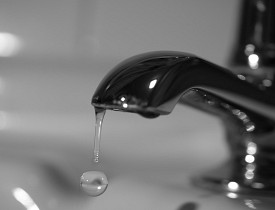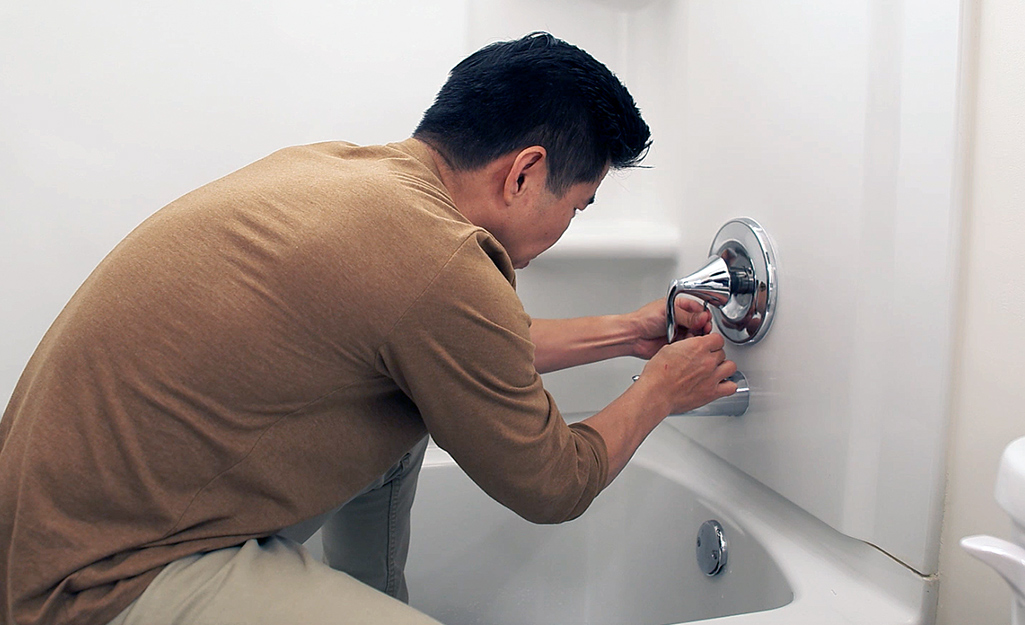Which It's Critical to Rectify a Dripping Faucet
Which It's Critical to Rectify a Dripping Faucet
Blog Article
This great article on the next paragraphs about Leaky Faucets: Why They Happen & What to Do About Them is totally compelling. You should investigate it.

Dripping faucets might look like a minor hassle, however their effect surpasses simply the annoyance of the noise. From wasting water to incurring unnecessary monetary expenses and health risks, overlooking a trickling tap can bring about numerous repercussions. In this short article, we'll delve into why it's essential to address this usual house problem quickly and effectively.
Wastefulness of Water
Environmental Impact
Leaking faucets add substantially to water wastage. According to the Epa (EPA), a solitary faucet trickling at one drip per second can throw away more than 3,000 gallons of water annually. This not just strains water sources yet likewise influences communities and wild animals based on them.
Financial Prices
Increased Water Expenses
Past the ecological influence, dripping faucets can inflate water expenses considerably. The accumulated wastage gradually converts right into greater energy expenditures, which can have been stayed clear of with prompt repairs.
Potential Home Damage
Furthermore, extended dripping can lead to harm to components and surfaces surrounding the tap. Water build-up can trigger staining, corrosion, and also structural issues if left neglected, leading to additional fixing expenses.
Health Worries
Mold and Mold Growth
The constant visibility of dampness from a leaking faucet produces a perfect atmosphere for mold and mildew and mildew development. These fungi not only endanger indoor air top quality but likewise posture health dangers, particularly for individuals with respiratory system problems or allergies.
Waterborne Diseases
Stagnant water in leaking taps can come to be a breeding place for bacteria and other virus, raising the threat of waterborne conditions. Impurities such as Legionella microorganisms grow in stagnant water, possibly leading to serious illnesses when consumed or breathed in.
DIY vs. Professional Repair work
Benefits and drawbacks of DIY Repair
While some might attempt to take care of a dripping tap themselves, DIY fixings come with their very own collection of difficulties. Without correct understanding and devices, DIY attempts can aggravate the issue or cause insufficient fixings, prolonging the issue.
Advantages of Working With a Professional Plumber
Employing an expert plumber makes certain that the underlying cause of the dripping faucet is addressed successfully. Plumbers possess the knowledge and equipment to detect and repair faucet concerns effectively, saving time and lessening the risk of more damages.
Step-by-Step Guide to Repairing a Dripping Tap
Devices Called for
Prior to trying to fix a trickling faucet, collect the required devices, consisting of a flexible wrench, screwdrivers, replacement parts (such as washing machines or cartridges), and plumber's tape.
Usual Tap Issues and Their Solutions
Recognize the type of tap and the details issue causing the drip. Common problems include damaged washing machines, rusty shutoff seats, or malfunctioning O-rings. Describe supplier instructions or on the internet tutorials for detailed advice on fixings.
Preventive Measures
Normal Maintenance Tips
To stop trickling taps, perform routine upkeep such as cleaning up aerators, checking for leaks, and changing worn-out parts promptly. In addition, consider setting up water-saving tools or updating to much more reliable components.
Importance of Prompt Services
Attending to dripping taps as soon as they're observed prevents more water waste and possible damage, inevitably conserving both water and money over time.
Influence On Residential Property Value
Assumption of Well-Maintained Home
Preserving a property in good condition, including addressing upkeep problems like leaking faucets, enhances its regarded worth and desirability amongst potential customers or tenants.
Impact on Resale Worth
Characteristics with well-kept plumbing fixtures, including faucets, command greater resale values in the property market. Resolving dripping faucets can contribute to a favorable impact during residential or commercial property examinations and negotiations.
Environmental Responsibility
Individual Payment to Conservation
Taking responsibility for fixing trickling taps aligns with broader efforts toward water preservation and ecological sustainability. Every person's actions collectively make a substantial impact on preserving valuable resources.
Sustainable Living Practices
By focusing on punctual fixings and adopting water-saving routines, people contribute to sustainable living techniques that benefit both existing and future generations.
Conclusion
Attending to a leaking tap exceeds simple convenience; it's a vital action toward conserving water, decreasing monetary expenses, and safeguarding wellness and building. Whether via do it yourself repair work or specialist assistance, taking action to repair leaking faucets is a little yet impactful method to advertise liable stewardship of resources and add to a much healthier, a lot more sustainable future.
How to Fix a Leaky Faucet: Step-by-Step Repair Guide
A leaky faucet may seem like a simple annoyance, but if it's not fixed promptly, that leak could cost hundreds to potentially thousands. From water damage to mold, mildew, and high water bills, even a tiny leak can be catastrophic if left unattended. Damage like this can even affect the overall value of your home, so it's important to take the right approach for leaky faucet repair. You may need the help of a plumber in some cases, but we've got a few tips you can try on how to fix a leaky faucet before calling the pros.
Four Faucet Types
When you're learning how to fix a leaky faucet, the first step is knowing what kind of faucet you're working with! There are four common types.
Cartridge Faucets
Cartridge faucets come in one- or two-handled varieties. In one-handled cartridge faucets, hot and cold water combines in a single cartridge. In the two-handled versions, hot and cold water are controlled separately and mixed in the faucet.
Ball Faucets
Ball faucets have a single lever you push up and down to adjust the pressure and rotate to change the temperature. A slotted metal ball controls the amount of water allowed into the spout.
Compression Washer Faucets
They're the oldest type of faucet, but they're still used in many homes — especially older ones. Compression faucets have two separate handles that, when turned, raise or lower the washer that seals a water valve. This valve stops water from flowing through the faucet when it is turned off.
Disc Faucets
Disc faucets rarely need to be repaired due to their maintenance-free design. The water flow is controlled by two discs — the upper one raises and lowers against a fixed lower disc, creating a watertight seal. If your disc faucet starts leaking, you may need to replace the seals or clean residue buildup from the inlets.
Fixing a Leaky Faucet
Step 1: Turn Off the Water
Whether you're learning how to fix a leaky bathtub faucet or how to fix a leaky kitchen faucet, always turn off the water supply to your working area when you're fixing a leak. The last thing you want is a flood added to your list of things to fix.
Look for the shutoff valves below your sink or around the tub and turn them clockwise to stop the water flow. If your faucet doesn't have shutoff valves, you may need to turn off the water for the whole house. Check to make sure it's off by turning the faucet on. If nothing comes out, you're ready to start the repair.
Step 2: Take Apart the Faucet
How you disassemble your faucet depends on the type of fixture you have. You can use a flathead screwdriver to remove the caps on top of the handle or handles for cartridge and compression faucets. Inside, you should see handle screws. Unscrew these with a screwdriver to remove the handle.
Disc- and ball-style faucets will typically have an inlet screw near the handle, and removing that will reveal the interior of the faucet.
Detach the Valve Stem
For cartridge- and compression-style faucets, you'll see the inner valve stem or cartridge once you remove the faucet handles. If you have a compression faucet, unscrew the brass valve stem. If you have a cartridge faucet, pull out the cartridge. If your cartridge has been in place for a while, it may require some tools or extra force to remove it due to mineral deposits.
Examine and Replace Parts
Once you've removed the parts, check them out to confirm what needs to be replaced. You may see corroded rubber washers, O-rings, stems, or cartridges. On a ball-style faucet, check the seats and springs for damage.
If you need to repair a leaky disc faucet, check the inlet and seals on the lower disc.
Once you determine what parts must be replaced, visit your local hardware store. Bring the damaged parts with you to ensure you can purchase the correct components to replace them.
Clean Valves and Faucet Cavity
If you've removed a stem or cartridge, you may notice mineral buildup in the faucet's threads. Use white vinegar to clean the valve seat by soaking it for a few minutes, then scrub it away with a soft toothbrush and rinse with warm water. You can also clean the interior of the faucet in the same way.
Reassemble the Faucet
Once your faucet is cleaned and the required parts have been replaced, it's time to reassemble it. Put the pieces back together and slowly turn the water supply back on. Doing this slowly is crucial because too much initial water pressure can damage the new hardware you've just installed.
https://homewarranty.firstam.com/blog/how-to-fix-leaky-faucet

Do you really like more info about Why Is It Important To Fix Your Leaking Tap/Faucet?? Give a remark down below. We'd be pleased to know your ideas about this entry. We are looking forward that you come back again later on. Feel free to set aside a second to share this blog if you enjoyed it. Thanks a lot for going through it.
Report this page